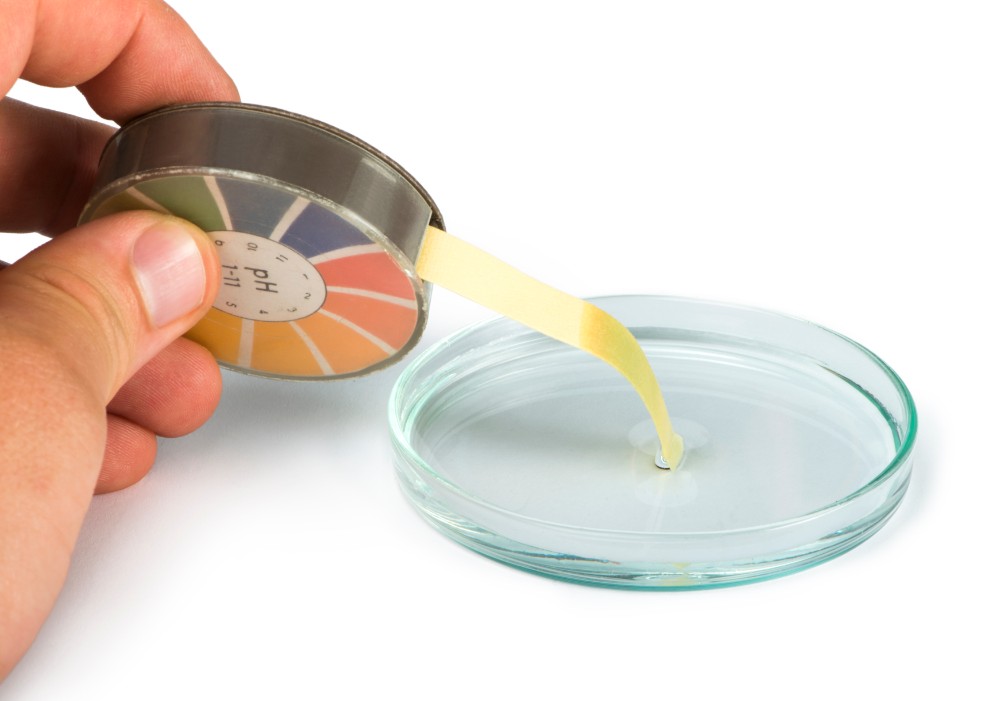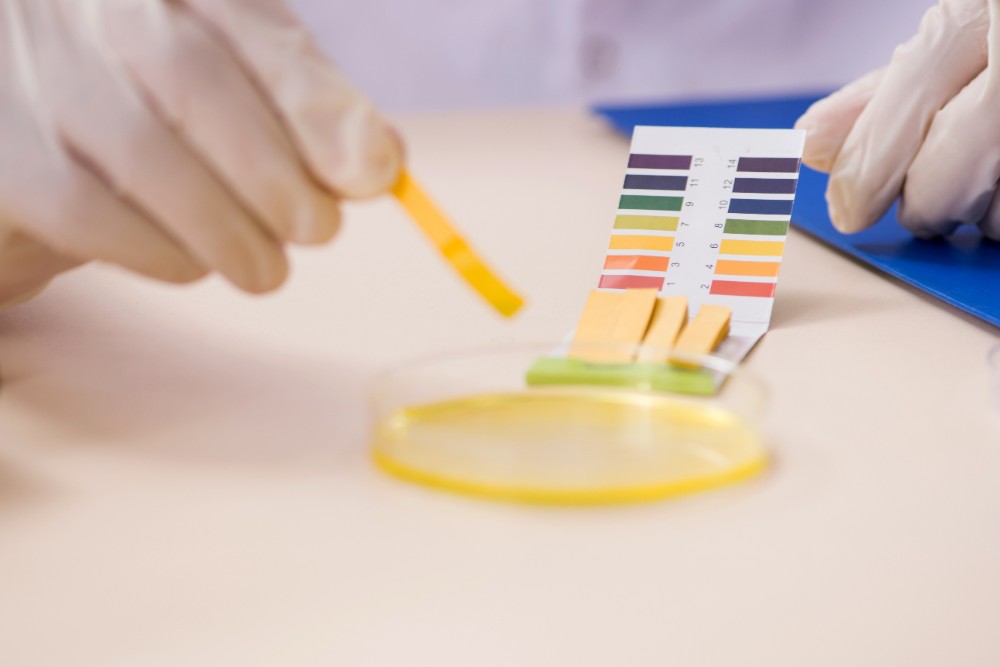pH Insights and the Future of HOCl Technology
1. Understanding Hypochlorous Acid (HOCl)
1.1. The Nature of Hypochlorous Acid
Hypochlorous acid (HOCl) is a weak acid with antimicrobial properties, like a mild citrus juice. It is naturally produced by white blood cells in mammals for healing and protection.
1.2. pH and Its Impact on HOCl
The pH level of HOCl solutions is crucial as it influences the effectiveness of the acid. Hypochlorous acid is most effective against bacteria, fungi, and viruses within a pH range of 3 to 6.
1.3. The Role of pH in HOCl Stability
At a pH below 5, HOCl begins to convert to chlorine gas, while above pH 6, it turns into hypochlorite ions (OCl-). The stability and effectiveness of HOCl as a disinfectant are optimized within the pH range of 5 to 7.
(Some of the content comes from Wikipedia and www.ncbi.nlm.nih.gov)

2. The Importance of pH in HOCl Applications
2.1. pH in Medical and Healthcare Settings
In healthcare, maintaining the correct pH of HOCl is essential for its effectiveness in wound care and disinfection processes, ensuring minimal irritation and greatest microbial eradication.
2.2. pH Balance in Food Safety
The pH of HOCl is critical in food processing and handling, where it is used as a sanitizer. The right pH ensures the safety of food products without affecting taste or quality.
2.3. pH Management in Water Treatment
In water treatment, HOCl is used for disinfection. Proper pH control ensures the effectiveness of the disinfection process and prevents the formation of harmful byproducts.

3. Best HOCl Generator: Choosing the Right Equipment
3.1. Features of a High-Quality HOCl Generator
A best-in-class HOCl generator should maintain a stable pH and produce a consistent concentration of HOCl for reliable disinfection capabilities.
3.2. Efficiency and Cost-Effectiveness
The best HOCl generators offer efficient electrolysis processes, ensuring cost-effective production of hypochlorous acid with minimal energy consumption.
3.3. Ease of Use and Maintenance
Top-rated HOCl generators are designed for user-friendly operation and must minimal maintenance, ensuring long-term reliability and performance.
4. HOCl Electrolysis Machine: The Technology Behind It
4.1. How Electrolysis Works for HOCl Production
Electrolysis involves passing an electric current through a saltwater solution to produce HOCl. This technology is the backbone of modern HOCl generators.
4.2. Innovations in Electrolysis Machines
Advancements in HOCl electrolysis machines have led to more stable and efficient production of hypochlorous acid, meeting the demands of various industries.
4.3. The Future of Electrolysis Technology
As technology progresses, HOCl electrolysis machines are expected to become more efficient, with improved pH control and higher production rates.
5. Hypochlorous Acid Water Machine: Applications and Benefits
5.1. Versatility in Agricultural Use
Hypochlorous acid water machines are used in agriculture for pest control and hygiene maintenance, offering a safe and effective alternative to chemical pesticides.
5.2. Sanitation in the Food Industry
In the food industry, HOCl water machines ensure high standards of sanitation without leaving harmful residues, making them ideal for use in food processing facilities.
5.3. Environmentally Friendly Solutions
HOCl water machines produce a natural and biodegradable disinfectant, aligning with the growing demand for eco-friendly solutions in various sectors.
6. The Market for Hypochlorous Acid Generators
6.1. Global Demand for HOCl Generators
The market for HOCl generators is expanding due to increasing awareness of the benefits of hypochlorous acid in sanitation and disinfection.
6.2. Competitive Landscape
Understanding the competitive landscape is crucial for businesses looking to invest in or provide HOCl generators, as the market offers various options with different features and price points.
6.3. Customer Preferences and Trends
Consumer preferences are shifting towards sustainable and safe disinfection methods, driving the demand for HOCl generators that meet these criteria.
7. The Impact of pH on HOCl Generator Performance
7.1. pH Monitoring and Control Systems
Advanced pH monitoring and control systems in HOCl generators ensure the production of hypochlorous acid within the optimal pH range for greatest effectiveness.
7.2. pH Change Techniques
Various techniques are employed to adjust the pH of HOCl solutions, including the use of buffering agents and careful control of the electrolysis process.
7.3. The Role of pH in Disinfection Efficacy
The efficacy of HOCl as a disinfectant is directly related to its pH, with the most effective range being slightly acidic, which allows for better penetration and neutralization of pathogens.

8. Best Practices for Using HOCl Generators
8.1. Proper Installation and Setup
Following best practices for the installation and setup of HOCl generators is essential for ensuring their optimal performance and longevity.
8.2. Regular Maintenance Schedules
Adhering to regular maintenance schedules for HOCl generators keeps the equipment running efficiently and ensures the production of high-quality hypochlorous acid.
8.3. Training for Operators
Proper training for operators of HOCl generators is crucial for the safe and effective use of the equipment, as well as for troubleshooting and problem-solving.
9. The Science Behind Hypochlorous Acid
9.1. Chemical Composition and Properties
Understanding the chemical composition and properties of hypochlorous acid provides insight into its effectiveness as a disinfectant and its safe use in various applications.
9.2. Mechanism of Action
The mechanism of action of HOCl involves the oxidation of cellular components, leading to the inactivation of microorganisms. This understanding is vital for optimizing its use in disinfection processes.
9.3. Safety and Toxicity Considerations
While HOCl is generally safe, it is important to consider safety and toxicity when handling and using hypochlorous acid, especially in settings where it comes into contact with food or sensitive materials.
10. Hypochlorous Acid in the Fight Against Infections
10.1. The Role of HOCl in Infection Control
Hypochlorous acid is a key component in infection control strategies, particularly in healthcare settings where it is used to sanitize surfaces and medical equipment.
10.2. Emerging Pathogens and HOCl Efficacy
The efficacy of HOCl against emerging pathogens, such as antibiotic-resistant bacteria and viruses, is a significant area of research, with implications for public health and safety.
10.3. HOCl and the Future of Disinfection
As new pathogens emerge and resistance to traditional disinfectants grows, hypochlorous acid may play an increasingly important role in the future of disinfection and sanitization.
11. The Economic Benefits of Hypochlorous Acid Generators
11.1. Cost Savings in Disinfection Processes
The use of HOCl generators can lead to significant cost savings in disinfection processes due to their efficiency and the reduced need for chemical storage and disposal.
11.2. Return on Investment for Businesses
For businesses, the return on investment in HOCl generators is often realized through improved sanitation standards, reduced downtime, and increased customer confidence.
11.3. Supporting Sustainable Practices
The economic benefits of HOCl generators also extend to supporting sustainable practices, as they often must fewer resources and produce less waste compared to traditional disinfection methods.
12. The Evolution of Hypochlorous Acid Generators
12.1. Technological Advancements
The evolution of HOCl generators has been marked by significant technological advancements, including improvements in electrolysis efficiency and pH control.
12.2. Adaptation to Industry Needs
HOCl generators have adapted to meet the needs of various industries, from healthcare to agriculture, demonstrating their versatility and effectiveness in a wide range of applications.
12.3. Future Innovations in HOCl Generation
Looking ahead, future innovations in HOCl generation are expected to focus on further enhancing efficiency, reducing costs, and expanding the applications of hypochlorous acid.
13. Hypochlorous Acid: A Comprehensive Disinfectant
13.1. Broad-Spectrum Disinfection
Hypochlorous acid offers broad-spectrum disinfection capabilities, making it effective against a wide range of microorganisms, including bacteria, viruses, and fungi.
13.2. Safety and Eco-friendliness
Its safety and eco-friendliness set HOCl apart as a preferred disinfectant, particularly in applications where traditional chemicals may pose risks to health or the environment.
13.3. The Versatility of HOCl in Various Settings
The versatility of HOCl is evident in its use across various settings, from household cleaning to industrial sanitation, highlighting its adaptability and effectiveness.
14. The Role of pH in HOCl Effectiveness
14.1 The Impact of pH on HOCl Stability
Hypochlorous acid (HOCl), a potent disinfectant, is known for its effectiveness in various applications, including medical and industrial settings. The stability of HOCl is significantly influenced by pH levels, a critical factor in its efficacy as a sanitizer. In the realm of Best HOCl generator technology, understanding the pH impact is essential for optimizing the generation and application of hypochlorous acid.
At pH levels between 3 and 6, HOCl remains the predominant species, exhibiting its maximal antimicrobial properties. This pH range is crucial for maintaining the stability of HOCl, as it prevents the conversion of HOCl into less effective species. The HOCl electrolysis machine operates within this pH range to ensure the production of a stable and effective disinfectant solution.
14.2 How pH Affects the Disinfection Process
The disinfection process involving HOCl is highly dependent on pH, as it determines the form in which chlorine exists in solution. At lower pH values, HOCl is more effective due to its ability to penetrate microbial cells more readily. As the pH increases, HOCl begins to dissociate into hypochlorite ions (OCl-), which are less effective at penetrating cell membranes and thus less efficient as a disinfectant.
In practical applications, such as using a Hypochlorous Acid Water Machine, adjusting the pH to the optimal range ensures that the disinfectant maintains its oxidizing properties and effectively neutralizes pathogens. This pH-dependent efficacy makes it crucial for users to monitor and adjust the pH of HOCl solutions to ensure maximum disinfection potential.
14.3 The Ideal pH for HOCl Applications
The ideal pH for HOCl applications is typically between 5 and 6. At this pH, HOCl is present in a form that is both stable and highly effective against a broad spectrum of microorganisms. This pH range allows for the optimal balance between the oxidizing power of HOCl and its stability in solution.
14.4 pH Management in HOCl Generation Systems
Modern Best HOCl generator systems are designed to maintain the pH within the optimal range for HOCl stability and effectiveness. These systems often include features that automatically adjust the pH during the electrolysis process, ensuring that the generated HOCl remains effective for its intended use.
14.5 The Importance of pH in HOCl Formulations
In various formulations, such as those used in wound care and surface disinfection, the pH of HOCl is carefully controlled. A pH-neutralized HOCl solution is particularly beneficial for applications where contact with skin or sensitive surfaces is inevitable, as it minimizes potential irritation while maintaining antimicrobial activity.
14.6 pH Adjustments for Specific Applications
For specific applications, such as food processing or healthcare, the pH of HOCl solutions may be adjusted to meet regulatory standards and safety requirements. These adjustments ensure that the disinfectant is not only effective but also safe for use in these sensitive environments.
14.7 The Role of pH in HOCl Safety and Efficacy
Maintaining the correct pH is crucial for both the safety and efficacy of HOCl. An improperly adjusted pH can lead to reduced effectiveness against pathogens or, in extreme cases, the production of harmful byproducts. Thus, pH management is a critical aspect of HOCl electrolysis machine operation and HOCl solution preparation.
14.8 Conclusion on pH's Role in HOCl
In conclusion, pH plays a pivotal role in the stability, effectiveness, and safety of hypochlorous acid solutions. Whether using a Hypochlorous Acid Water Machine or manual mixing, ensuring the pH is within the optimal range is essential for achieving the best results in disinfection processes.

15. The Science Behind HOCl Generators
15.1 Electrolysis Process
Hypochlorous acid (HOCl) is generated through a process known as electrolysis, which involves passing an electric current through a solution of salt and water. This method is not only efficient but also environmentally friendly, making it the preferred choice for producing HOCl.
15.1.1 The Role of Electrolysis in HOCl Production
Electrolysis plays a crucial role in the production of hypochlorous acid. It is a chemical reaction that splits water molecules into hydrogen and oxygen, with the simultaneous generation of HOCl. This process is facilitated by the application of an electric current, which drives the reaction forward.
15.1.2 Efficiency of Electrolysis for HOCl
The efficiency of electrolysis in producing HOCl is notable due to its ability to use low-maintenance systems. Industrial-grade HOCl generators, such as the EWCO 1200 model, are designed for low maintenance and can generate HOCl at optimized pH levels and high concentrations.
15.2 Types of Electrolysis Cells
15.2.1 Membrane Cell Technology
Membrane cell technology is one of the key advancements in HOCl generation. This technology uses a polymer membrane that allows only positive ions to pass through, ensuring the purity of the hypochlorous acid produced.
15.2.2 Single Cell Electrolysis
Single cell electrolysis is another method used in HOCl generators. It differs from membrane cell technology by not separating the anolyte and catholyte, resulting in a more stable and simpler system to maintain.
15.3 pH of Hypochlorous Acid
15.3.1 Optimal pH Range for HOCl
The pH of hypochlorous acid is a critical factor in its effectiveness as a disinfectant. It is most effective in the pH range of 4 to 6, where it exists primarily in the molecular form (HOCl) rather than the ionized form (OCl-).
15.3.2 Impact of pH on HOCl Stability
The stability of hypochlorous acid is influenced by pH levels. At lower pH, the solution is more stable and retains its disinfectant properties for longer periods. But, at higher pH levels, the acid begins to dissociate, reducing its effectiveness.
15.4 Best HOCl Generator Features
15.4.1 High Concentration Capacity
Top-of-the-line HOCl generators are capable of producing hypochlorous acid at concentrations up to 600 ppm, making them suitable for a wide range of applications.
15.4.2 Adjustable pH Control
The ability to adjust the pH of the generated HOCl is a significant feature of modern generators. This allows for customization based on the specific needs of various消毒 applications.
15.5 Applications of HOCl Generators
15.5.1 Agricultural Use
HOCl generators are increasingly used in agriculture for pest control and to maintain hygiene without the use of harsh chemicals.
15.5.2 Medical and Pharmaceutical Industries
In the medical and pharmaceutical sectors, HOCl generators provide a safe and effective means of disinfection, contributing to a sterile environment.
15.6 Market Trends in HOCl Generation
15.6.1 Growing Demand for On-Site Generation
There is a rising trend towards on-site generation of hypochlorous acid, allowing for greater control over the production process and reducing reliance on third-party suppliers.
15.6.2 Technological Advancements
Advancements in electrolysis technology have led to more efficient and stable HOCl generators, meeting the increasing demand for environmentally friendly disinfectant solutions.
15.7 The Future of HOCl Electrolysis Machines
15.7.1 Innovations in Electrolysis
The future of HOCl generators looks promising with continuous innovations in electrolysis methods, aiming to increase efficiency and reduce operational costs.
15.7.2 Sustainability and Eco-Friendliness
As the world moves towards more sustainable practices, HOCl generators align with these goals by offering a non-toxic and biodegradable alternative to traditional disinfectants.
15.8 Choosing the Best HOCl Generator
15.8.1 Considerations for Selection
When selecting the best HOCl generator, factors such as production capacity, ease of use, and maintenance requirements should be considered to ensure the right fit for specific needs.
15.8.2 Cost-Effectiveness Analysis
A cost-effectiveness analysis is essential when choosing an HOCl generator, taking into account not only the initial investment but also the ongoing operational costs and the return on investment efficiency and reliability.
16. Applications of HOCl Generators
16.1 Agricultural Uses
Hypochlorous acid (HOCl), generated through the electrolysis process, has found extensive application in agriculture, offering a safe and effective solution for pest control and crop protection. The non-toxic nature of HOCl makes it an ideal choice for maintaining healthy plant environments by eliminating algae and fungus, which often attract pests.
Pest Control Efficiency: HOCl generators have been instrumental in controlling a wide range of pests, including mites, thrips, aphids, and fungus gnats, without harming the crops or the environment.
Sanitization and Disinfection: With the ability to drop up to 99.9999% of harmful pathogens, HOCl generators provide exceptional sanitization power, ensuring clean and safe farming practices.
16.2 Industrial and Commercial Sanitation
The commercial sector has recognized the value of HOCl generators in maintaining high standards of hygiene and sanitation. These generators produce a sustainable and environmentally friendly disinfectant that complies with food safety regulations, making them suitable for use in the food industry, medical facilities, and public spaces.
Food Industry Applications: HOCl is used for sanitizing food contact surfaces, ensuring microbial safety without the need for harsh chemicals or post-rinsing.
Medical Facility Sanitation: In healthcare settings, HOCl generators contribute to infection control by providing a safe and effective means of disinfecting surfaces and equipment.
16.3 Home and Personal Use
HOCl generators are not only limited to industrial and agricultural applications but also extend their benefits to home use. They offer a safe and natural alternative to traditional cleaning and disinfecting products, making them suitable for personal care, household cleaning, and even wound care.
Personal Hygiene: HOCl's gentle yet effective properties make it ideal for personal hygiene, such as hand washing and sanitizing skin without causing irritation.
Household Cleaning: HOCl generators are super versatile for household cleaning. You can use them for everything from wiping down countertops to sanitizing your laundry. They offer a non-toxic and effective way to keep your home clean.

